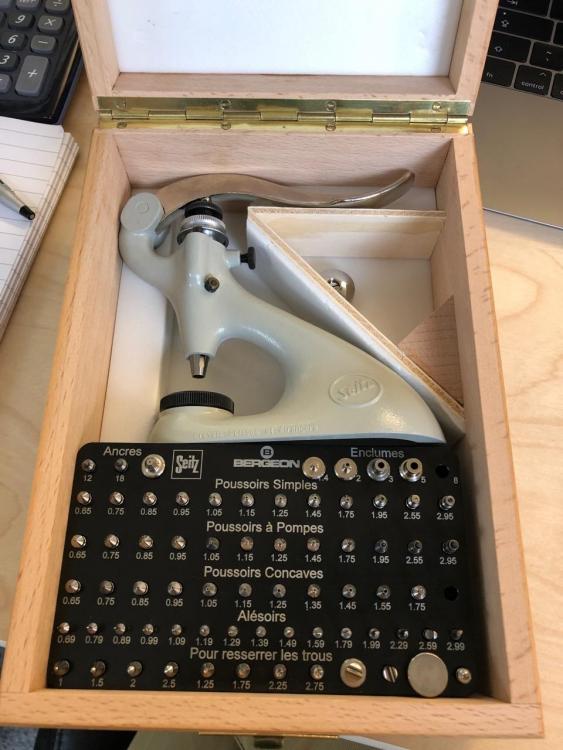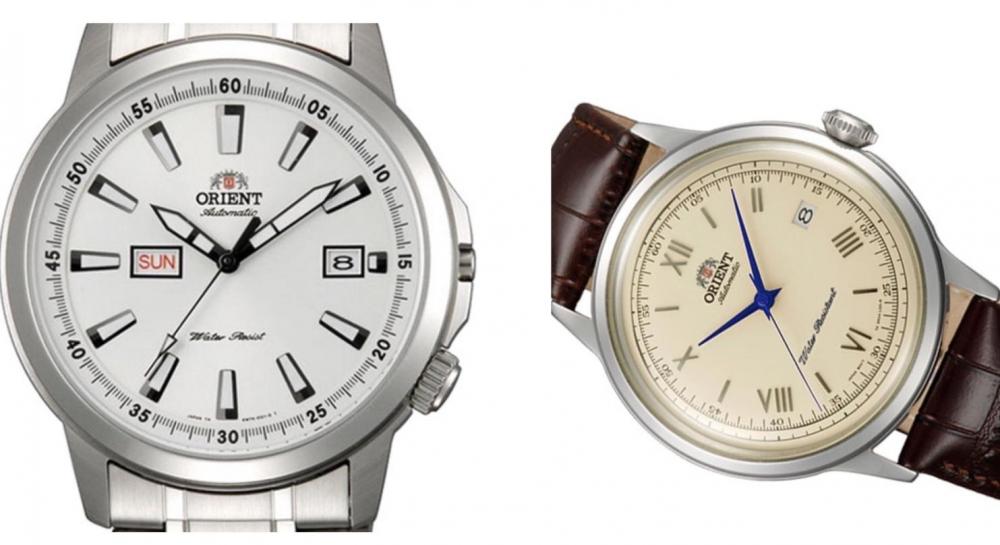Leaderboard
Popular Content
Showing content with the highest reputation on 10/13/18 in all areas
-
@Nucejoe: You are absolutely right in saying that there are different techniques of how to do things. You are also right in saying that it is sometimes not so easy to navigate through the site to find the answers; even though it took me no more then 15 seconds to find the ST96 walkthrough. The problem is however that the other questions are hidden in a thread called "Remove watch dial". If a new thread were to be opened for each questions, chances are higher that the answers given to that question may pop up in the search function faster. This also may prevent that answers to that specific question (and therefor the knowledge spectrum) get lost, or do hide in a thread which deals with another problem. If we all do an effort in shoring up the question & answers, the search function may actually start to yield better results; and that will hopefully help (new) members to find answers to their questions. I find it hard to imagine that on this forum most basic questions are not already answered / explained in several different ways. However, for specific questions / problems, a new thread should indeed be opened so we can all learn from the given answers. @Leelemon; If you can't find the answer to your question in the search function, feel free to open another thread with your next question. Many members will gladly help you, be it by answering or by pointing you in the right direction2 points
-
1 point
-
Hi Guys finally got the sensor for the Horotec and got back on the job. The watch was dismantled again and cleaned, everything inspected under the digi scope and lo and behold the centre wheel has some teeth damaged caused when the spring broke, the wheel was replaced and the watch reassembled without lubrication firstly to check the amp. The amp is now upto 300+ Deg on watch o scope and the horotec, Beat error 0.03ms so lubed it up It is now running ok so left for a 24 hr test. RESULT. thanks for the input,1 point
-
Bonus points to clockboy and eezyrider ! Managed to open it. Apparently there are three lugs on the case back that are equally spaced and locate with corresponding notches on the case. Very easy to go past the opening point and as such re-lock it (Japanese sense of humour??). Here are some photos to clarify, also for future reference should anyone encounter one. Assuming this isn't the only one still in existence. Many thanks to all. Now just need to track down a replacement movement...….1 point
-
You won’t regret it mate, just been using mine on a job that I’d wish I’d never taken on ( we all know that feeling I’m sure ) anyway, I quick update for you, I said on my last post that you can’t turn the LED light off, well I was wrong!! You can and you can adjust the brightness too, very handy, it’s on a control wheel on the side of the screen where you slot the SD card. One thing I do do is place either a white bit of paper on the base, either that or a nice bit of green card that I use as a bench mat ( hobbycraft £2.50 for 20 A4 sheets ) this helps to emphasis what ever you are looking at making for a sharper image.1 point
-
No problem. I enjoy doing this it keeps me occupied.1 point
-
Huge selection on ebay. Don't believe the magnification claims I recommend getting one with a stand that holds it vertical.1 point
-
Whenever I go away, I always take my Sekonda (£19.95) quartz watch with me and nothing else. I don't want to lose it but, if for any reason it does go missing, I would rather it be that watch than one of my other expensive alternatives. Mind you, it's getting that there is a high risk of 'losing' your watch here in the UK, now that law and order on the streets has all but disappeared. I'm going out, later on. Now.....................where's that Sekonda of mine!?1 point
-
that is a very nice lathe, congrats. I just looked at several watch makers lathe motors, they are all around 1/10 - 1/8 hp (say 75-100 watts) and speeds range from 6000 - 10,000. Looking at the size of the pulleys they are likely a 3:1 reduction to the spindle. There are Chinese made sewing machine motor for $30 but I agree 100 real or hopeful watts is not enough for that lathe. A key thing with electronic speed control ( by a VFD or DC PWM) is that it might be constant torque, but that means HP drops as the speed drops. If the motor is 1/4 HP at 3000 rpm, and you slow it down to 300 rpm electronically, you end up with 1/40 of a HP! Constant torque is great with say conveyors; with a machine tool you ideally want constant power - speed goes down, torque goes up. This is why mechanical speed reduction is always superior in everyway….but cost lol. The ideal is a 3P w/ VFD or DC motor and use the OEM belt speed reduction. I've a couple of Schaublin 70 and that’s what I did, best of both worlds - variable speed and full hp available If you get the oringal stepped pulley on the motor all the better. Nevertheless, if you want get electronic speed reduction, the idea is you put a much larger motor on it so it'll still have umph at low speeds. VFD 3P is an excellent way to go. A really cost competitive alternative is the 3/4hp Consew motor which I think is excellent (they are all over ebay/amazon). It’s fairly cheap, just over $100 US, and is a DC servo drive that max's at 4500 rpm. Given the pulley dia it seemed ideal to spin a small lathe at 4000 or 5000 rpm down to a few hundred. As a servo, the controller gives it more amps if the servo feedback shows its slowing down - it keeps the same rpm with a varying load. Some might think 3/4hp is too much buts not given you're using it for speed control, i.e low rpms it will deliver a fraction of 3/4 hp but still enough to do work on a little lathe. I've an extra unimat 3 that I'm readying for departure and it didn't have a motor. I put a Consew 1000 on it and am really pleased, so much so I've bought a second for my U3. That lathe was underpowered imo but not any more, irrc it was 1/10 of a hp. The Consew motor is intended for an under bench mount for an industrial sewing machine and has a lever to connect to a treadle for speed on/off. That I think is really important for watchmakers lathes, I currently use a miltifix but I dislike not having foot control and am thinking of getting a Consew and mounting it under the bench to drive watch makers lathes. For larger lathes like yours or the U3, mostly used with a slide rest (instead of a graver), I think speed control knob preferred. Fortunately its an easy mod to convert the lever speed control into a knob control. The black knob shown I added; its speed control and the lever just sits there disconnected.1 point
-
I would suggest that this lathe would be suitable for lightweight model making. It is configured for metal cutting, but I would question the accuracy of both the three jaw chuck and tailstock. Diametrical run out and the smallest diameter the chuck will hold are both unlikely to be suitable for watch work. It may be if some use for larger clock parts, but if you want a lathe for working on microscopic watch pivots you would be advised to pick up a quality second hand watchmakers lathe.1 point
-
Bracket clocks and Long Case Clocks (grandfather) styles are virtually the same. You are correct in thinking London being the centre of clock making. It took time for what was happening in London to reach out to other parts of the country. The plates including pillars and other parts of the movement would be made under the same roof. Anything to do with the dial would be made at a different place; a case maker would construct the case. With white dial clocks, an artist would paint the dial. The clock maker would know where he could obtain chains for a fusee movement. It was in later time when mass production came into existence that a string of employers would each make one part and at the end of production, you had those that would assemble the movement. Clockmakers would have a catalogue of sorts with drawings to show off their work. You mention the dial ornaments in the corners. These are called spandrels, you also find them in the arch of arch dials, and these were diecast, the style and size of these changed over the years. If I have missed anything just remind me. A book I highly recommend is White Dial Clocks: The Complete Guide by Brian Loomes1 point
-
If you dont have a pin vice, use a hands remover but should look close not to hurt the pinions. Some folks even use a nail c!ipper, apply nail clipper like a hands remover. This is a center seconds which makes other method/ techniques possible. Also a strong tweezers, use the tweezer as you would hold a screw with it, to grab the pinion with tweezers pull straigt out.1 point
-
Remove the canon pinion located at other side( dial side) , you can use a pin vice to grip the cannon pinion with, pull straight out ,dont bend . Suitable tool, pin remover. What is holding the minute gear is the canon pinion.1 point
-
1 point
-
1 point









